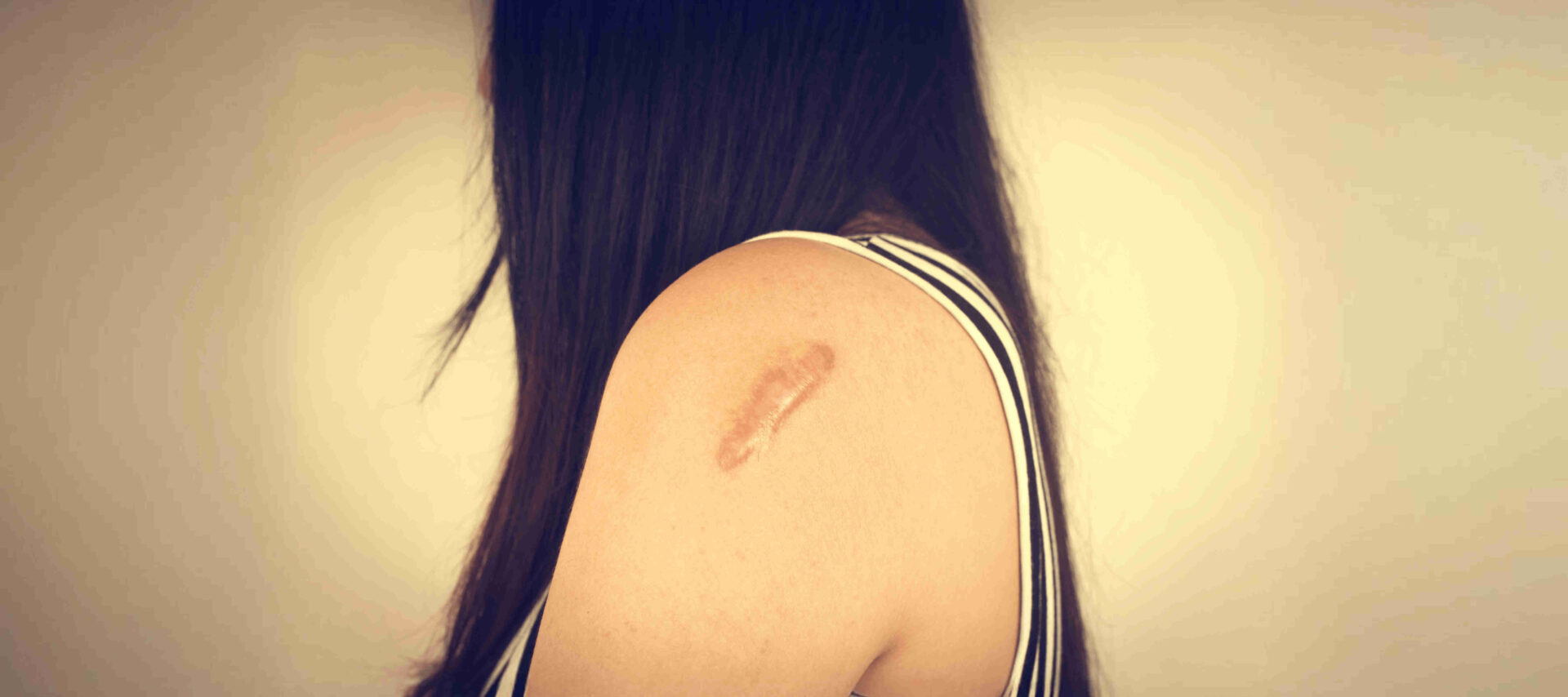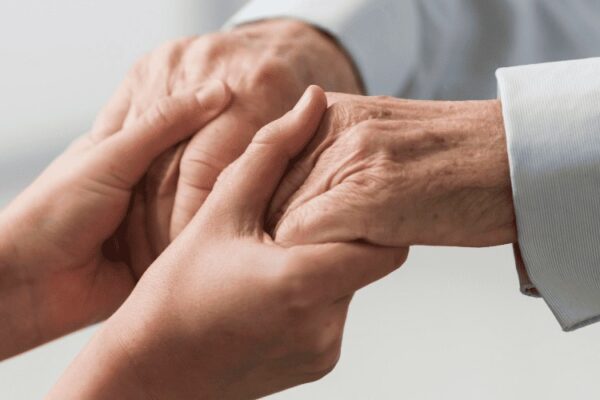
25 Oct An In-Depth Guide to Keloid Treatment
An In-Depth Guide to Keloid Treatment
By Island Hospital | October 25, 2024 12:00:00 PM
Medical Reviewer: Dr. Khor Yek Huan, Dermatologist
Keloids, those raised scars that extend beyond the boundaries of the original wound, can be both physically uncomfortable and emotionally distressing for those who develop them.
While these overgrown areas of scar tissue pose no health risks, their unsightly appearance and potential to cause itching or pain drive many to seek keloid treatment.
In this article, we’ll explore the symptoms, risk factors, and diagnosis of keloids, along with preventive measures. We’ll also dive into different keloid treatment options, discussing their effectiveness and potential side effects.
What are Keloids?
Keloids are the raised scars that form when your body produces too much scar tissue during healing.
Unlike normal scars, keloids continue to grow over time, sometimes developing months or even years after the initial skin injury. If you notice changes in a healing wound or an old scar, it could indicate a keloid is forming.
Currently, the exact cause of keloid formation remains unclear.
However, it is believed to result from a dysfunction in your wound-healing process. Even after your original wound has healed, your body continues to produce collagen, causing an excess buildup at the site of your wound. In the end, this accumulation of unwanted collagen leads to keloid formation.
Typically, keloids can develop after various types of skin injury, including:
- Body piercings (especially ear piercings)
- Cuts or surgical incisions
- Burns
- Acne or chickenpox scars
- Deep wounds (e.g., puncture wounds)
- Tattoos
- Minor scratches or insect bites
How to Tell if a Keloid Scar Is Forming?
Identifying a keloid scar early can be crucial for effective treatment. Here are key signs to watch for:
|
|
|
|
|
|
Note: These sensations may vary in intensity depending on the size and location of the keloid. |
|
|
Consult your dermatologist if you suspect you have keloid. Remember, early intervention can help manage the growth and appearance of keloids!
Risk Factors of Keloids
While anyone can develop keloids, certain factors may increase the likelihood of their formation:
1. Ethnicity
Keloids are more prevalent in individuals with darker skin tones, particularly in African, Asian, Latin, Hispanic and Mediterranean populations, due to higher melanin levels.
2. Age
Keloids typically occur between ages 10 and 30, as this age range coincides with hormonal changes and increased skin tension during growth.
3. Genetic Predisposition
If you’ve had a keloid scar before or have a family predisposition for keloids, you’re at higher risk of developing another.
4. Hormonal Changes
During puberty, pregnancy and menopause, hormonal fluctuations can affect your collagen production, which may trigger keloid formation or exacerbate existing scars.
Hormonal therapies, such as birth control pills or hormone replacement therapy, may elevate the risk of keloid scarring, too.
5. Location of Skin Injury
Certain areas of your body, such as the chest, shoulders, cheeks, and earlobes, are more prone to keloid formation.
6. Types of Skin Injury
Ear piercing is the most common cause of earlobe keloid. Chest and sternum keloids are more commonly caused by surgery and acne scars, whilst almost all abdominal keloids are induced by surgery.
Keloids may develop following any skin injuries ranging from burn, trauma, surgery, or piercings to inflammatory skin conditions such as acne vulgaris, folliculitis, chicken pox, or vaccinations (particularly BCG vaccination).
However, not all such insults lead to a keloid scar, even in the susceptible individuals. The unique observation is that each patient is affected by a specific type of injury.
There are very few patients who have keloids caused by two different injuries. For example, a patient who develops a bad keloid on the arm following an acne eruption does not develop keloid from her previous cut injury or BCG vaccination.
Diagnosis of Keloids
For most cases, keloids are typically diagnosed by a dermatologist clinically, without the need for further tests.
However, if there’s any doubt about the diagnosis, a skin biopsy may be performed.
During this procedure, the affected area is numbed with a local anaesthetic, and a small skin sample is taken and sent to the lab. Through microscopic examination using the lab equipment, the pathologist confirms the presence of keloid tissue.
Once a keloid is confirmed, your dermatologist will develop a personalised treatment plan based on your keloid’s size, location, and medical history.
Treatments of Keloids
Keloids can be challenging to treat, and often, a combination of treatments works best. Here are some common treatments:
| 1. Usage of silicone-based products |
Note: These products are available without a prescription. |
| 2. Corticosteroid Injections |
|
| 3. Cryotherapy |
|
| 4. Laser Therapy |
|
| 5. Surgery |
|
| 6. Radiation Therapy |
|
Indeed, navigating these keloid treatment options can be overwhelming, but you don’t have to go through it alone.
At Island Hospital, our dermatologists are always here to support and guide you every step of the way.
Book an appointment today to discuss a personalised keloid treatment plan tailored to your needs!
How Can I Prevent Keloids?
While it’s not always possible to completely prevent keloids, especially if you’re prone to them, there are several ways you can employ to reduce your risk:
- Monitor Healing Wounds
Watch for signs of skin thickening, which could indicate keloid formation. If you notice any changes, seek immediate dermatological attention. - Avoid Unnecessary Skin Injuries
If you’re keloid-prone, consider avoiding elective cosmetic procedures, tattoos, and piercings, as keloids typically develop after skin injuries. - Practise Proper Wound Care
Clean wounds immediately with mild soap and water. Avoid drying the wound with alcohol or iodine, as this can lead to irritation and inflammation.
After cleaning the wounds, keep the area moist by applying sterile petrolatum gauze or hydrogel dressings.
Remember to change the dressings daily and handle the wound gently to avoid excessive scrubbing, as this can cause micro-injuries that may disrupt the healing process. - Use Silicone-Based Products
These products can serve both as treatment and prevention for keloids, helping to improve scar appearance and prevent further growth.
For more details on how these products work, explore the section on Treatments of Keloids. - Consider Pressure Therapy
Pressure earrings can be worn when your skin starts thickening after piercings, while pressure garments are helpful for other areas prone to keloids.
This method works by applying constant pressure to reduce blood flow, break down collagen fibres, and prevent new collagen formation, helping to flatten the keloid and prevent it from growing.
For optimum results, pressure garments must be worn 12-20 hours a day over several months. - Apply Over-the-Counter Corticosteroid Creams
Applying these creams to the keloid can relieve itching and discomfort. Be sure to use them as directed on the package or by your healthcare provider for the best results. - Protect Wounds from Sun Exposure
Sunlight can change the colour of your keloid, making it more noticeable.
To protect them, cover the area with clothing or use sunscreen with SPF 30 or higher, broad-spectrum protection, and water resistance.
While it’s not always possible to prevent keloids completely, especially if you’re prone to them, taking these precautions and seeking early treatment can help minimise their development and growth.
Want to enhance your skin without surgery?
Check out our article on the latest non-invasive treatments that are revolutionising the beauty world!
Your Path to Healthier Skin: Island Hospital’s Dermatology Excellence
In conclusion, while keloid treatment can be challenging, advancements in medical science offer hope for those affected by these stubborn scars.
If you’re struggling with keloids or any other skin, hair, or nail concerns, consider visiting the Dermatology Department at Island Hospital. Our skilled dermatologists are ready to provide personalised advice and treatments, helping you to achieve radiant, healthy skin.
Book an appointment with us today and experience exceptional patient care and cutting-edge treatments by our dermatologists!
Should you have any questions, feel free to contact us.
FAQ
Are keloids and hypertrophic scars the same?
No, keloids and hypertrophic scars aren’t the same, though both result from excessive collagen production during healing.
Here are their differences:
| Grow beyond the original injury site, spreading to healthy skin. | Stay within the boundaries of the original wound. |
| Can continue growing for months or years. | Develop within weeks to months and may flatten over time. |
| Typically look uniform, appearing pink or red. |
Can you permanently remove a keloid?
Permanent keloid removal can be challenging due to their high tendency to recur. However, with proper treatment and follow-up care, keloids can often be significantly reduced or even eliminated.
The main treatments to remove keloids include:
- Corticosteroid Injections
- Cryotherapy
- Laser therapy
- Surgery
- Radiation therapy
After undergoing keloid removal treatment, it’s important to follow preventive measures to speed up the recovery process and reduce the recurrence risk, including:
- Monitor healing wounds
- Avoid unnecessary skin injuries
- Practise proper wound care
- Use silicone-based products
- Consider pressure therapy
- Apply over-the-counter corticosteroid creams
- Protect wounds from sun exposure
For detailed information on various treatment options and prevention strategies, refer to the sections “Treatments of keloids” and “How Can I Prevent keloids?” in this article.
How to stop keloid from growing?
To stop keloids from growing, you should receive proper treatments to remove them, such as:
- Corticosteroid Injections
- Cryotherapy
- Laser Therapy
- Surgery
- Radiation Therapy
However, the success rate of the treatments varies depending on the individual and the specific treatment approach. Hence, consulting with a dermatologist is recommended to develop the most effective treatment plan for each case.
Then, after receiving keloid treatment, follow these preventive measures to speed up the recovery process of your keloid and reduce the risk of having keloid again in the future:
- Monitor healing wounds
- Avoid unnecessary skin injuries
- Practise proper wound care
- Use silicone-based products
- Consider pressure therapy
- Apply over-the-counter corticosteroid creams
- Protect wounds from sun exposure
Hope to learn more about the ways to treat and prevent the formation of keloids? Check out the sections “Treatments of Keloids” and “How Can I Prevent Keloids?” in this article!
Can I leave a keloid untreated?
Yes, you can leave a keloid untreated, as keloids are generally not harmful to your health. However, leaving them untreated may lead to:
- Continued growth and spread to surrounding skin
- Increased discomfort, itching, or pain
- Potential limitation of movement if located near a joint
- Psychological distress due to appearance
Thus, it’s best to consult a dermatologist for proper assessment and treatment options, even if you choose not to pursue aggressive keloid treatment.
How long do keloids last?
Keloids are typically long-lasting without intervention. They may continue to grow slowly for weeks, months, or even years after the initial injury. Once fully formed, a keloid can persist indefinitely unless treated.
While some may fade over time, complete spontaneous resolution is rare.
Are keloids dangerous?
Keloids aren’t usually harmful to your health. They’re non-cancerous growths and don’t increase your risk of skin cancer.
However, keloids can cause:
- Physical discomfort (itching, pain, or tenderness)
- Cosmetic concerns
- Emotional distress or self-consciousness
- Restricted movement if they form over joints
Therefore, the impact on life quality makes keloids a condition worth addressing with a healthcare professional.
Related Doctors
| Derived from | Complications |
|---|






